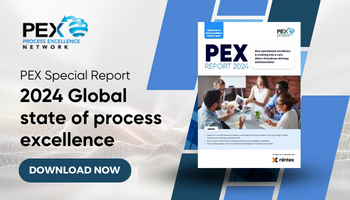The top differences between RPA and DPA
How MaxLife has benefitted from DPA to digitize a process in the servicing area
Add bookmark
Digital process automation (DPA) is the fifth solution respondents are currently using for their transformation initiatives according to PEX Report 2023: Global state of process excellence survey data. The popularity of this technology can be explained by its capacity at digitizing processes end-to-end.
This article explains some of the key takeaways from PEX Network’s recent Accelerating business transformation by leveraging digital process automation report. Read on to learn more about the key differences between robotic process automation (RPA) and DPA. This article also outlines the benefits the latter can provide companies.
In the report, Stephan Blasilli, director of Lean, business process excellence, sustainability at EDP Renewables, explained the differences between RPA and DPA.
“RPA is mainly used to automate repetitive tasks without or with very little human interaction while DPA is mainly used to onboard humans to a process by providing guidance,” he said.
Don't miss any news, updates or insider tips from PEX Network by getting them delivered to your inbox. Sign up to our newsletter and join our community of experts.
During her session at PEX Live: Digital Process Automation 2022, Arpita Saha, head of business process automation at MaxLife, noted another difference between the two. While RPA is specific and comprises bots automating mundane tasks done by humans, DPA can help automate processes end-to-end.
It can orchestrate automations in larger workflows and measure how entire business operations execute. DPA can provide companies with benefits such as time and cost savings, and improved experiences for employees, customers and external partners.
One specific process which has benefitted from DPA at MaxLife is in the servicing area, which used to deal with manual letters sent by customers and scanned into the company’s systems. Now, no paper is required. Customers can create a request digitally and receive a transaction ID which can be processed automatically in the company’s systems.
What other difference do you seen between RPA and DPA? Let us know in the comments below.
PEX Report 2024 global state of process excellence

PEX Network's annual report reveals the current state and future trends of process excellence. Based on a study profiling hundreds of global process excellence leaders, the report provides insights on how to leverage innovation, generative AI, and process intelligence to achieve operational excellence, customer-centricity, and organizational growth. Download your copy of the PEX Report 2024 today and benchmark your process excellence journey against your peers.
Download Now


















